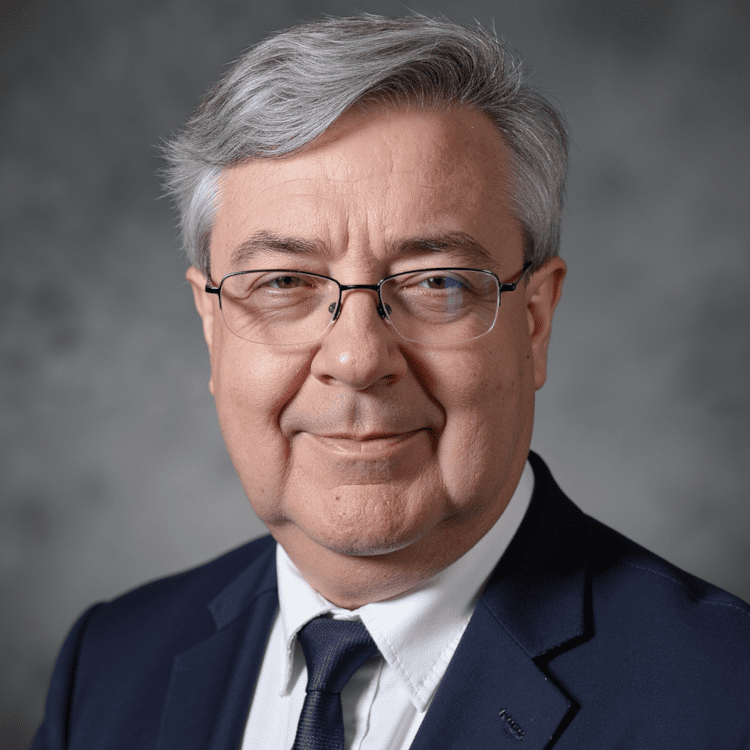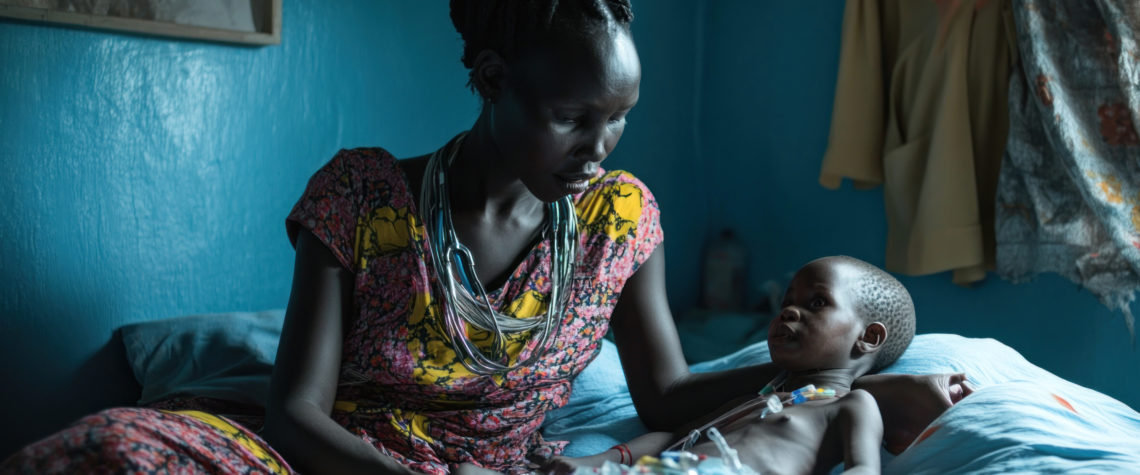Relating the Call to Healthcare Justice to the Mission of God
In the shadow of gleaming private hospitals, a mother in rural South Africa walks for hours, carrying her feverish child to reach the nearest clinic. In the bustling streets of Mumbai, a daily wage worker forgoes essential medication because the cost would mean his family goes without food. In the remote villages of Southeast Asia, preventable diseases claim lives due to the absence of healthcare workers. In the favelas of Brazil, a young woman with a treatable condition deteriorates because quality care remains inaccessible to her community.
These scenarios are not merely unfortunate circumstances but manifestations of profound unfairness that contradict God’s vision of shalom for humanity. The prophet Micah’s words echo across millennia with striking relevance: “What does the Lord require of you but to do justice, love mercy, and walk humbly with your God?” (Micah 6:8). This threefold mandate calls believers to a mission beyond personal piety—a mission that encompasses advocating for those whose voices are silenced in global health systems.
This article examines how healthcare access represents not a matter of charity but of fundamental justice. It explores how Christians are called to participate in God’s mission (missio Dei) by advocating for equitable healthcare across diverse global contexts. Through theological reflection, analysis of structural inequalities, and practical advocacy strategies, we will discover how compassionate care intersects with justice advocacy to represent God’s shalom on earth.
The Theology of Healthcare Justice: Beyond Charity to Rights
Reframing Healthcare as Justice
The prevailing narrative often frames healthcare access for vulnerable populations as charity—a benevolent gift bestowed upon the less fortunate. However, a biblically informed understanding reveals healthcare as a matter of justice rather than optional benevolence. Throughout Scripture, God demonstrates particular concern for the vulnerable and disadvantaged. The laws of ancient Israel protected the rights of widows, orphans, and foreigners (Deuteronomy 10:18; 24:17-22), ensuring their basic needs were met not through optional charity but through structured systems of justice.
The biblical concept of tzedakah (צדקה) encompasses both charity and justice, suggesting that meeting needs is not merely kind but right. As theologian Nicholas Wolterstorff notes, “Justice is grounded in God’s character and is expressed through right relationships that ensure human flourishing” (Wolterstorff, 2011). When healthcare remains inaccessible to vulnerable populations, it represents a distortion of these right relationships and a barrier to human flourishing.
Shalom and Holistic Health
The Hebrew concept of shalom offers a comprehensive framework for understanding healthcare justice. Shalom encompasses not merely the absence of disease but wholeness in every dimension—physical, emotional, spiritual, and social well-being. Isaiah’s vision of shalom includes healing for the brokenhearted and freedom for captives (Isaiah 61:1), suggesting restoration that addresses both individual and structural barriers to wholeness.
Health, viewed through this lens, becomes a prerequisite for the flourishing God intends for humanity. Bryant Myers, in his work on transformational development, emphasizes that “God’s desire for shalom—comprehensive well-being for all creation—necessarily includes equitable access to resources that sustain health” (Myers, 2011). When health systems consistently exclude certain populations based on geography, socioeconomic status, or other factors, they contradict God’s vision of comprehensive shalom and impede our participation in God’s mission (missio Dei) of restoration.
Jesus’ Healing Ministry as Justice Work
Jesus’ healing ministry offers a compelling model for the intersection of compassionate care and justice advocacy. While his miracles addressed immediate suffering, they simultaneously challenged structures that excluded the ill and disabled. When Jesus healed on the Sabbath (Luke 13:10-17), he directly confronted religious structures that prioritized rigid adherence to law over human well-being. His healing touch for those with leprosy (Mark 1:40-45) challenged social systems that isolated and stigmatized certain illnesses.
Theologian Jürgen Moltmann observes that “Jesus’ healings were not merely acts of compassion but signs of the coming kingdom—a kingdom characterized by justice, particularly for those most vulnerable” (Moltmann, 2012). Following Christ’s example, the Caregiving Mission calls believers to both provide direct care and challenge unjust structures that create and perpetuate health disparities. In doing so, Christians participate directly in the missio Dei—God’s ongoing mission to redeem, reconcile, restore and renew all creation unto himself (Colossians 1:20).
Global Health Disparities: Understanding Structural Inequality
South Africa: The Legacy of Apartheid in Healthcare
Nearly three decades after apartheid’s official end, South Africa’s healthcare system remains deeply divided. The country operates a two-tiered system: a well-resourced private sector serving 16% of the population, and an underfunded public sector serving the remaining 84% (South African Department of Health, 2023). This division is not accidental but the direct legacy of historical inequality.
Rural areas, particularly in former homelands, face severe healthcare worker shortages, with some clinics serving populations ten times larger than their capacity. HIV/AIDS and tuberculosis continue to disproportionately affect Black South Africans, reflecting how social determinants of health—including housing, education, and employment—remain shaped by historical inequities (Mayosi & Benatar, 2014).
The proposed National Health Insurance (NHI) scheme represents an attempt to address these disparities, yet its implementation faces significant resistance from those who benefit from the current unequal system. For Christians committed to healthcare justice, understanding this context is crucial for effective advocacy that addresses both immediate needs and the underlying structural inequalities. Such advocacy represents vital participation in God’s mission to restore right relationships in human society.
Indian Subcontinent: Caste, Class, and Care
Across the Indian subcontinent, healthcare access often reflects entrenched social hierarchies. The caste system, despite legal prohibitions against discrimination, continues to influence who receives quality care. Research by the Indian Institute of Public Health found that Dalit communities face significantly longer wait times, experience more frequent mistreatment, and receive less thorough care than higher-caste patients (Sharma et al., 2019).
Rural-urban divides compound these inequalities, with 70% of India’s healthcare infrastructure concentrated in urban areas that house only 30% of the population. Out-of-pocket expenditures remain catastrophically high, pushing an estimated 55 million Indians into poverty annually due to healthcare costs (Balarajan et al., 2011).
Private healthcare dominates, with regulatory oversight often insufficient to ensure quality and affordability. This system particularly disadvantages religious minorities, tribal populations, and women, whose health concerns may be deprioritized due to various forms of discrimination. Understanding these complex dynamics is essential for developing advocacy strategies that address both immediate barriers to care and the structural inequalities that create them. Such understanding enables Christians to participate meaningfully in God’s mission of establishing equitable systems that uphold human dignity.
Southeast Asia: Geographic Isolation and Ethnic Exclusion
In countries like Myanmar, Laos, and the Philippines, geographic isolation creates profound healthcare disparities. Mountainous regions and island communities often lack basic health infrastructure, with some areas having no access to trained healthcare providers. These geographic challenges frequently overlap with ethnic and religious exclusion (World Health Organization Southeast Asia Regional Office, 2022).
Ethnic minorities in Myanmar’s border regions face dual challenges of geographic isolation and political exclusion, with state healthcare investments disproportionately benefiting majority populations in central areas. Similar patterns exist throughout the region, where indigenous communities receive significantly less healthcare investment despite often facing greater health challenges.
Healthcare worker distribution reflects these disparities, with physician density in rural areas often 8-10 times lower than in urban centers. While community health worker programs attempt to bridge these gaps, they often lack sufficient resources, training, and connection to referral systems (Grundy et al., 2015). Through addressing these inequalities, Christians participate in God’s mission to bring wholeness and restoration to underserved communities.
Latin America: Privatization and Inequitable Access
Throughout Latin America, the privatization of healthcare services has created multi-tiered systems that reflect and reinforce societal inequalities. Countries like Brazil, Chile, and Colombia have implemented universal coverage policies, yet quality and accessibility vary dramatically based on socioeconomic status, race, and geographic location (Pan American Health Organization, 2023).
Indigenous populations throughout the region face particularly severe disparities. In Guatemala, for example, maternal mortality rates among indigenous women are three times higher than the national average (PAHO, 2023). These disparities reflect both geographical barriers to care and the consistent undervaluation of indigenous knowledge and healing practices.
The COVID-19 pandemic exposed and worsened these inequalities, with infection and mortality rates significantly higher in low-income communities. This reflects not only immediate barriers to healthcare but broader social determinants—inadequate housing, occupational risks, and limited social protection—that disproportionately impact vulnerable populations (Horton, 2020). By confronting these injustices, Christians participate in God’s mission to establish shalom—comprehensive wellbeing—for all communities.
The Christian Healthcare Professional as Advocate
Prophetic Witness in Professional Contexts
Christian healthcare professionals occupy a unique position as witnesses to both individual suffering and structural inequality. This position carries prophetic responsibility similar to that exercised by biblical prophets who spoke truth to power (Amos 5:24; Isaiah 1:17). The prophetic dimension of healthcare advocacy involves bearing witness to realities that powerful institutions might prefer to ignore, and represents a direct participation in God’s mission to establish justice.
Dr. Paul Farmer, whose work with Partners in Health transformed healthcare delivery in Haiti and other resource-limited settings, embodied this prophetic witness. He consistently challenged the “cost-effectiveness” paradigm that rationalized providing substandard care to the poor. “The idea that some lives matter less is the root of all that is wrong with the world,” he observed, articulating a principle deeply aligned with biblical ethics (Farmer, 2010).
This prophetic role requires moral courage—willingness to name unfairness even when doing so carries professional or personal costs. It may involve questioning institutional priorities, challenging discriminatory practices, or advocating for patients whose needs are consistently deprioritized. Such advocacy reflects Jesus’ willingness to confront religious and political authorities when their actions contradicted God’s concern for human flourishing, and aligns healthcare professionals with God’s mission of redemption and restoration.
Building Bridges: Collaborative Advocacy
While prophetic witness is essential, effective advocacy often requires building collaborative relationships across professional, cultural, and ideological boundaries. The Apostle Paul’s approach to ministry demonstrates this principle—engaging Greek philosophers on Mars Hill (Acts 17:16-34) using their own philosophers and poets to explain biblical truths and working within diverse communities to advance the gospel and participate in God’s mission.
In healthcare settings, collaborative advocacy might involve:
- Forming interdisciplinary coalitions that bring together clinicians, public health experts, community leaders, and policymakers
- Engaging with traditional healers and community health workers to develop culturally responsive care models while maintaining biblical faithfulness
- Building relationships with administrators and policymakers who can implement structural changes
- Partnering with patients and communities in designing advocacy initiatives
Dr. Miriam Were’s work in Kenya exemplifies this collaborative approach. By bringing together government officials, village leaders, and international organizations, she pioneered community-based healthcare approaches that dramatically improved health outcomes while respecting local leadership and knowledge (Sacks, 2020).
Such collaboration requires humility—recognition that no single professional or cultural perspective holds all answers. It embodies the “walking humbly with God” dimension of Micah 6:8, acknowledging our limited perspective and need for diverse insights. This collaborative stance also reflects the trinitarian nature of God’s mission, in which the three persons within the Trinity work in perfect unity toward shared purpose.
Leveraging Professional Authority for Structural Change
Healthcare professionals possess specialized knowledge and societal credibility that can be leveraged for structural change. While direct patient care fulfills the “loving mercy” aspect of Micah’s mandate, advocacy for structural change addresses the “doing justice” component. Both dimensions represent crucial aspects of participation in the missio Dei. This might include:
- Providing expert testimony to policymaking bodies
- Publishing research that documents health disparities and their causes
- Serving on hospital ethics committees or regulatory boards
- Mentoring the next generation of healthcare professionals to integrate justice concerns into their practice
Dr. Christiaan Barnard, famous for performing the world’s first heart transplant in South Africa, later used his professional authority to advocate against apartheid’s impact on healthcare. “A doctor is obligated to consider more than a diseased organ,” he wrote. “He must view the man as a whole and consider the social system which often contributes to his disease” (Barnard & Pepper, 1969).
This structural approach recognizes that treating individual patients without addressing root causes creates an endless cycle of preventable suffering. It reflects Jesus’ concern not only with individual healing but with transforming the conditions that enable human flourishing, thus participating in God’s mission to restore all creation.
Practical Strategies for Healthcare Advocacy
Addressing Medication Accessibility
Access to essential medications remains a critical justice issue across global contexts. The World Health Organization estimates that one-third of the global population lacks reliable access to essential medicines, with this figure rising to 50% in the poorest regions (WHO, 2023). Christian healthcare professionals can advocate for medication accessibility through several practical approaches that embody participation in God’s mission:
- Supporting Non-Commercial Production Models: Organizations like the Medicines Patent Pool enable generic production of patented medications for use in low-income countries. Advocacy for expanded licensing agreements can dramatically reduce costs for essential treatments.
- Promoting Rational Prescribing Practices: In many contexts, inappropriate prescribing drives up costs and contributes to problems like antimicrobial resistance. Training initiatives that promote evidence-based, cost-effective prescribing can improve both affordability and quality of care.
- Developing Community-Based Distribution Systems: In contexts with limited healthcare infrastructure, community-based distribution models can bridge access gaps. The Catholic Medical Mission Board’s pharmaceutical donation program has demonstrated how faith-based networks can extend medication access to remote communities (CMMB, 2021).
- Challenging Intellectual Property Regimes: While respecting the importance of research incentives, advocates can push for intellectual property frameworks that balance innovation with access. The Treatment Action Campaign in South Africa successfully challenged patent protections that kept HIV medications unaffordable, demonstrating the potential impact of coordinated advocacy (Heywood, 2009).
Addressing Healthcare Worker Distribution
The uneven distribution of healthcare workers represents a major barrier to equitable care. While global health worker shortages exist, the more acute problem is often distribution, with rural and underserved communities facing critical shortages while urban centers have relative abundance. Addressing this distribution challenge requires multi-faceted approaches that participate in God’s mission to reach those in greatest need:
- Supporting Rural Training Pipelines: Evidence suggests that healthcare professionals are more likely to practice in rural areas if they come from those communities and receive training focused on rural health challenges. Programs like the Walter Sisulu University Medical School in South Africa specifically recruit students from rural backgrounds and provide training oriented toward rural practice, an approach that has been shown to increase the likelihood of graduates practicing in underserved areas (Tumbo et al., 2009).
- Advocating for Supportive Work Environments: Healthcare workers often avoid rural postings due to professional isolation, inadequate infrastructure, and limited opportunities for career advancement. Advocacy for improved working conditions—including mentorship programs, continuing education opportunities, and appropriate technology—can make rural practice more sustainable.
- Promoting Task-Shifting Models: In contexts with severe healthcare worker shortages, task-shifting approaches can expand capacity by training community health workers and mid-level practitioners to provide essential services. Organizations like Last Mile Health in Liberia have demonstrated how community health workers can dramatically expand access when properly trained, equipped, and connected to referral systems (Kok et al., 2015).
- Addressing International Migration Dynamics: High-income countries often actively recruit healthcare workers from countries already facing shortages. Advocacy for ethical recruitment practices and compensation for source countries can help mitigate these dynamics. The WHO Global Code of Practice on the International Recruitment of Health Personnel provides a framework for such advocacy (WHO, 2020).
Addressing Quality of Care Disparities
Even when healthcare services are technically available, quality often varies dramatically based on patients’ social position. Addressing quality disparities requires targeted approaches that align with God’s mission to establish dignity and worth for all people:
- Implementing Culturally Responsive Care Models: Quality care requires cultural responsiveness—recognition of how cultural beliefs, practices, and communication styles influence healthcare experiences. The Church Health Center in Memphis, Tennessee, demonstrates how integrating cultural and spiritual dimensions into care can improve both effectiveness and patient experience for underserved communities (Gunderson, 2012).
- Developing Robust Quality Measurement Systems: “What gets measured gets managed.” Advocacy for quality metrics that capture disparities can drive improvement. Breaking down quality data by race, ethnicity, language, and other relevant factors makes disparities visible and creates accountability for addressing them.
- Implementing Community Accountability Mechanisms: Community scorecards and similar tools enable patients to provide structured feedback on healthcare quality. These mechanisms not only identify problems but empower communities as active participants rather than passive recipients in healthcare systems.
- Addressing Implicit Bias and Discrimination: Research demonstrates that implicit biases affect clinical decision-making even among well-intentioned providers. Advocacy for training programs that address these biases and institutional policies that mitigate their impact can reduce quality disparities.
Case Studies: Transformative Advocacy in Action
South Africa: From Treatment Access to Universal Coverage
The Treatment Action Campaign (TAC) in South Africa represents one of the most successful healthcare advocacy initiatives in recent history. Founded in 1998 amidst government denial of the HIV/AIDS epidemic, TAC combined grassroots mobilization, legal strategies, and international solidarity to transform South Africa’s response to HIV/AIDS.
TAC’s approach integrated scientific evidence, human rights frameworks, and moral appeals grounded in constitutional and religious values. Through strategic litigation, they established access to antiretroviral therapy as a constitutional right. Their “HIV Positive” t-shirt campaign reduced stigma by making the invisible visible, while treatment literacy programs empowered patients as knowledgeable advocates (Heywood, 2009).
The campaign’s success—eventually securing universal access to antiretroviral therapy for all South Africans with HIV—demonstrates how strategic advocacy can overcome even entrenched political resistance. TAC’s work has expanded beyond HIV to broader healthcare justice issues, including advocacy for South Africa’s National Health Insurance scheme.
For Christian healthcare professionals, TAC offers a model of solidarity with affected communities—positioning patients not as passive beneficiaries but as leaders in advocacy for their own health rights. This approach embodies the principle of accompaniment that characterized Jesus’ ministry and exemplifies participation in God’s mission to uphold human dignity.
India: Community Monitoring for Accountability
In Maharashtra state, India, the Support for Advocacy and Training to Health Initiatives (SATHI) has pioneered community-based monitoring of healthcare services. This initiative trains village health committees to assess local health facilities against established standards and publicly report their findings.
This approach has demonstrably improved service quality in participating districts, with significant increases in facility readiness, provider presence, and medicine availability. More importantly, it has transformed power dynamics between healthcare systems and the communities they serve, positioning citizens as active monitors rather than passive recipients of services (Shukla et al., 2018).
This model exemplifies how advocacy can shift from speaking for others to creating platforms that amplify historically overlooked voices. For Christian healthcare professionals, it reflects the biblical principle that all humans possess inherent dignity as image-bearers of God (Genesis 1:27) and should participate in decisions affecting their lives. This empowerment approach aligns with God’s mission to restore human agency and dignity.
Thailand: Universal Coverage Through Political Will
Thailand’s journey to universal healthcare coverage offers a powerful example of successful advocacy for structural change. Despite being a middle-income country with limited resources, Thailand achieved universal coverage in 2002 through a “30 Baht Scheme” that provided comprehensive care for a nominal co-payment (later eliminated).
This achievement resulted from decades of advocacy by the “Rural Doctor Society,” a group of physicians committed to health equity. These advocates strategically built public support, developed evidence-based policy proposals, and leveraged political opportunities to implement universal coverage despite opposition from commercial interests (Tangcharoensathien et al., 2020).
Thailand’s experience demonstrates how technical expertise combined with moral commitment can overcome resource constraints. The country now spends just 4.6% of GDP on healthcare while achieving outcomes comparable to nations spending far more, proving that equity and efficiency can be complementary rather than competing values.
For Christian healthcare professionals, Thailand’s example illustrates how technical competence serves the pursuit of justice—using specialized knowledge to develop feasible approaches to seemingly intractable problems. This integration of technical and moral dimensions exemplifies holistic participation in God’s mission to create systems that reflect biblical justice.
Latin America: Right to Health Through Constitutional Frameworks
Several Latin American countries have established the right to health through constitutional frameworks, creating powerful legal tools for advocacy. Colombia’s Constitutional Court has issued over 1,000 decisions enforcing the right to health, compelling the government to provide treatments initially excluded from benefit packages.
These legal frameworks enable advocacy that addresses both individual cases and structural issues. When patterns of violation emerge across individual cases, courts can mandate structural reforms that benefit entire populations. Brazil’s judiciary has similarly enforced constitutional health rights, though critics note that litigation-based approaches sometimes prioritize middle-class concerns over the needs of the most vulnerable (Yamin & Parra-Vera, 2009).
This approach demonstrates how advocacy can leverage existing legal frameworks to advance healthcare justice. For Christian advocates, it reflects the biblical principle that laws should protect vulnerable members of society (Psalm 82:3-4)—while recognizing that law alone cannot create justice without corresponding cultural and political commitment. By working within legal systems to protect the vulnerable, advocates participate in God’s mission to establish justice and mercy.
Practical Application: Becoming an Effective Healthcare Advocate
Listen First: Community-Centered Advocacy
Effective advocacy begins with listening to those directly affected by healthcare inequalities. The Gospels repeatedly show Jesus asking questions before offering solutions: “What do you want me to do for you?” (Mark 10:51). This stance of inquiry remains essential for contemporary advocates and aligns with God’s own mission of meeting people where they are.
Practicing community-centered advocacy involves:
- Building relationships with affected communities before designing advocacy initiatives
- Creating platforms where community members can speak directly to decision-makers
- Ensuring advocacy goals reflect community priorities rather than externally imposed agendas
- Recognizing and respecting community assets and existing coping strategies
Dr. Susan B. Rifkin observes that “”People-centered approaches avoid ‘doing for’ in favor of ‘doing with,’ respecting the agency and autonomy of communities to identify priorities and lead their own development. Sustainable change requires this shift from provider-driven to community-led processes.” (Rifkin, 2014). This approach acknowledges that while healthcare professionals possess important technical knowledge, communities hold essential expertise about their own experiences and needs. Such humble partnership reflects the incarnational nature of God’s mission.
Speak Strategically: Framing Healthcare Justice
How advocates frame healthcare justice significantly impacts their effectiveness. Different audiences respond to different arguments—some may be moved by appeals to compassion, others by economic arguments, and still others by appeals to fairness or human rights.
Strategic framing involves:
- Adapting language and emphasis for specific audiences without compromising core principles
- Using stories and narratives that make abstract inequalities concrete and relatable
- Presenting evidence in accessible formats that support moral arguments
- Connecting healthcare justice to widely shared values
Archbishop Desmond Tutu exemplified this approach, framing apartheid’s healthcare inequalities in terms of both Christian ethics and universal human rights: “When we see others as the enemy, we risk becoming what we hate. When we see others as beloved children of God, we best reflect God’s nature” (Tutu, 2013). His framing resonated across diverse audiences while maintaining moral clarity. This strategic communication reflects participation in God’s mission of truth-telling in ways that can be heard and received.
Act Consistently: Sustained Advocacy Over Time
Transformative change rarely results from isolated actions but from sustained commitment over time. Effective advocacy requires persistence similar to what Paul describes as “running the race with perseverance” (Hebrews 12:1). This sustained commitment reflects the patient, persistent nature of God’s own mission in the world.
Sustained advocacy involves:
- Developing measurable intermediate goals that build toward long-term change
- Creating supportive communities that sustain advocates through challenges and setbacks
- Celebrating incremental victories while maintaining focus on structural transformation
- Engaging in consistent self-reflection and course correction
In an article exploring the concept of social responsibility in medical education and practice, the authors state: “Effective advocacy requires long-term commitment and collaborative effort. It is less about heroic individual actions and more about building resilient networks that can sustain momentum through inevitable setbacks. This is particularly true in global health contexts, where change often happens incrementally over extended periods of time” (Dharamsi, 2011). This perspective guards against both burnout and the temptation to seek quick fixes for complex structural problems. By maintaining faithful presence over time, advocates participate in God’s ongoing mission that unfolds across generations.
Conclusion: Justice in Healthcare as Participation in God’s Mission
The quest for justice in healthcare represents not a peripheral concern but a central aspect of participation in God’s mission (missio Dei) in the world. When Christians advocate for equitable access to quality healthcare across global contexts, they participate in establishing shalom—God’s vision of comprehensive well-being for all creation.
This work requires both personal compassion and structural engagement—addressing immediate suffering while transforming the conditions that produce it. It calls for technical competence coupled with moral clarity, collaborative relationships alongside prophetic witness, and immediate response integrated with long-term vision. All these dimensions reflect the comprehensive nature of God’s mission of restoration.
The healthcare inequalities described throughout this article—whether in South Africa, the Indian subcontinent, Southeast Asia, or Latin America—contradict God’s intention for human flourishing. Yet the advocacy examples demonstrate that transformative change is possible when committed individuals and communities persist in seeking justice as participants in God’s redemptive mission.
As Christian healthcare professionals and concerned global citizens respond to Micah’s mandate—doing justice, loving mercy, and walking humbly with God—they become agents of God’s healing in a wounded world. Their advocacy creates spaces where glimpses of God’s kingdom become visible in healthcare systems that honor the dignity of every person as bearing the image of God.
In a world where vulnerable populations continue to experience healthcare as a site of exclusion and suffering, this advocacy represents an essential expression of faithfulness. It embodies the conviction that healthcare justice is not merely a professional or political concern but a spiritual calling—participation in God’s ongoing mission (missio Dei) of healing, restoration, and shalom.
References
- Balarajan, Y., Selvaraj, S., & Subramanian, S. V. (2011). Health care and equity in India. The Lancet, 377(9764), 505-515.
- Barnard, C., & Pepper, C. B. (1969). One Life. Macmillan.
- Catholic Medical Mission Board. (2021). Medical Donations Program: Annual Impact Report 2020-2021. CMMB Publications.
- Dharamsi, S., Ho, A., Spadafora, S. M., & Woollard, R. (2011). The physician as health advocate: Translating the quest for social responsibility into medical education and practice. Academic Medicine, 86(9), 1108-1113.
- Farmer, P. (2010). Partner to the Poor: A Paul Farmer Reader. University of California Press.
- Grundy, J., Healy, V., Gorgolon, L., & Sandig, E. (2003). Overview of devolution of health services in the Philippines. Rural and Remote Health, 15(3), 220.
- Gunderson, G.R., Cochrane, J.R. (2012). Religious Health Assets: What Religion Brings to Health of the Public. In: Religion and the Health of the Public. Palgrave Macmillan, New York.
- Heywood, M. (2009). South Africa’s Treatment Action Campaign: Combining law and social mobilization to realize the right to health. Journal of Human Rights Practice, 1(1), 14-36.
- Horton, R. (2020). Offline: COVID-19 is not a pandemic. The Lancet, 396(10255), 874.
- Kok, M. C., Dieleman, M., Taegtmeyer, M., Broerse, J. E., Kane, S. S., Ormel, H., … & de Koning, K. A. (2015). Which intervention design factors influence performance of community health workers in low- and middle-income countries? A systematic review. Health Policy and Planning, 30(9), 1207-1227.
- Mayosi, B. M., & Benatar, S. R. (2014). Health and health care in South Africa—20 years after Mandela. New England Journal of Medicine, 371(14), 1344-1353.
- Moltmann, J. (2012). Ethics of Hope. Fortress Press.
- Myers, B. L. (2011). Walking with the Poor: Principles and Practices of Transformational Development. Orbis Books.
- Pan American Health Organization. (2023). Addressing violence against women in health policies and protocols in the Americas: 2023 Regional Report. PAHO Publications.
- Rifkin, S.B. (2014). Examining the links between community participation and health outcomes: A review of the literature. Health Policy and Planning, 29 (suppl_2), ii98-ii106.
- Sacks E, Schleiff M, Were M, Chowdhury AM, Perry HB. Communities, universal health coverage and primary health care. Bulletin of the World Health Organization. 2020 Nov 1; 98 (11):773-780
- Sharma, S., Smith, S., Sonneveldt, E., Pine, M., Dayaratna, V., & Sanders, R. (2019). Formal and informal fees for maternal health care services in five countries: Policies, practices, and perspectives. Policy Working Paper Series, 16. Washington, DC: Futures Group.
- Shukla, A., Khanna, R., & Jadhav, N. (2018). Using community-based evidence for decentralized health planning: Insights from Maharashtra, India. Health Policy and Planning, 33(1), e34-e45.
- South African Department of Health. (2023). Annual Performance Plan 2022/2023. Government Printer.
- Tangcharoensathien, V., Witthayapipopsakul, W., Panichkriangkrai, W., Patcharanarumol, W., & Mills, A. (2018). Health systems development in Thailand: A solid platform for successful implementation of universal health coverage. The Lancet, 391(10126), 1205-1223.
- Tumbo, J. M., Couper, I. D., & Hugo, J. F. (2009). Rural-origin health science students in South African universities. South African Medical Journal, 99(1), 54-59.
- Tutu, D. (2013). God Is Not a Christian: And Other Provocations. HarperOne.
- Wolterstorff, N. (2011). Justice: Rights and Wrongs. Princeton University Press.
- World Health Organization. (2019). Global Code of Practice on the International Recruitment of Health Personnel: Third round of national reporting. WHO Publications.
- World Health Organization. (2023). Model List of Essential Medicines. WHO Publications.
- World Health Organization Southeast Asia Regional Office. (2022). Health Equity Monitor: Trends and disparities in health outcomes across the region. WHO SEARO Publications.
- Yamin, A. E., & Parra-Vera, O. (2009). How do courts set health policy? The case of the Colombian Constitutional Court. PLoS Medicine, 6(2), e1000032.

Dr. Curt Watke is a distinguished missiologist whose three-plus-decade-long career has significantly impacted Christian mission work in North America, particularly in under-reached and challenging regions. Holding a Ph.D. in Evangelism and Missions, Dr. Watke has focused on bridging cultural gaps and fostering sustainable Christian communities by developing innovative strategies that address contemporary challenges like globalization, urbanization, and religious pluralism. His emphasis on cultural sensitivity and contextualization in mission work is reflected in his collaborative writings, including notable works such as “Ministry Context Exploration: Understanding North American Cultures” and “Starting Reproducing Congregations.” Beyond his writing, Dr. Watke is a sought-after speaker and educator, lecturing at seminaries and conferences worldwide, and his teachings continue to inspire and equip new generations of missional leaders. His enduring legacy is marked by unwavering dedication to the mission of God and a profound influence on missional thought and practice. Dr. Watke serves as President and Professor of Evangelism & Missiology at Missional University.




